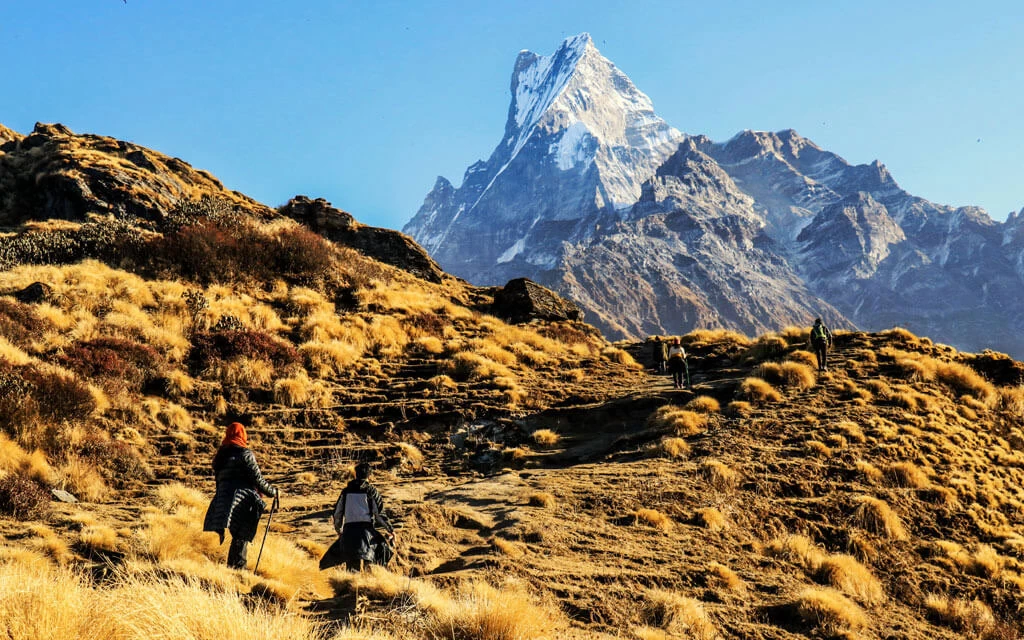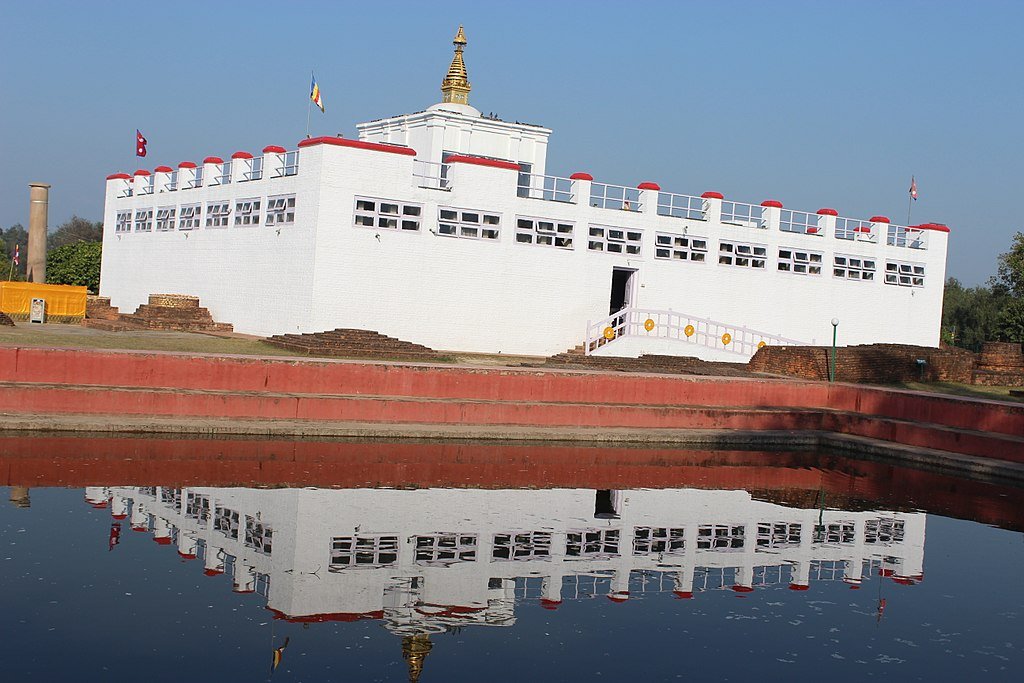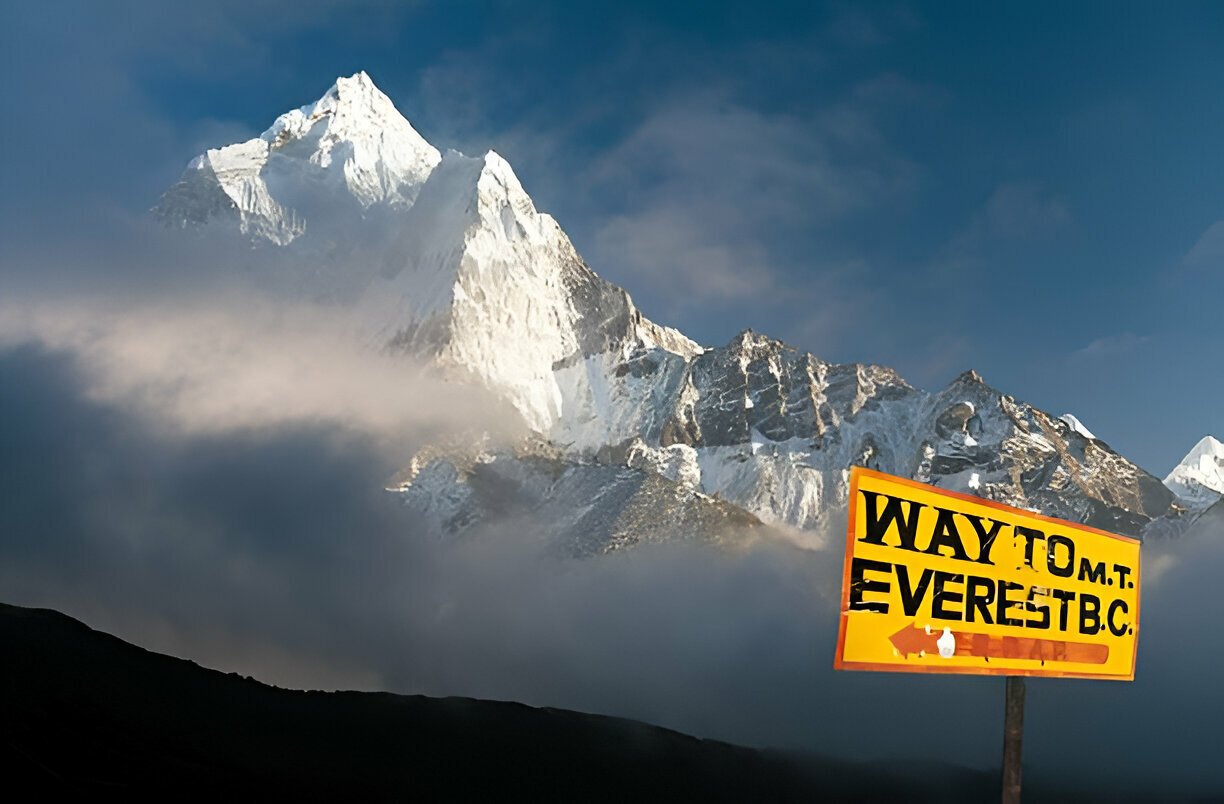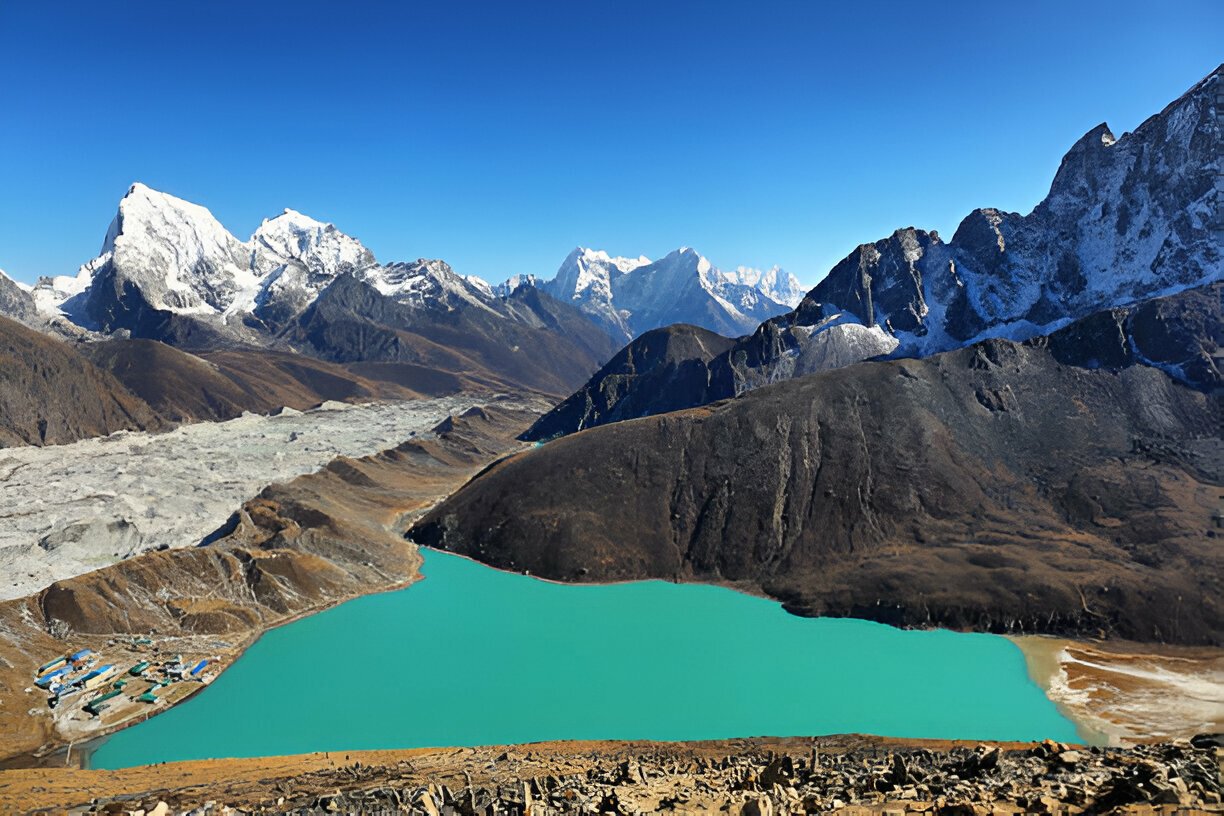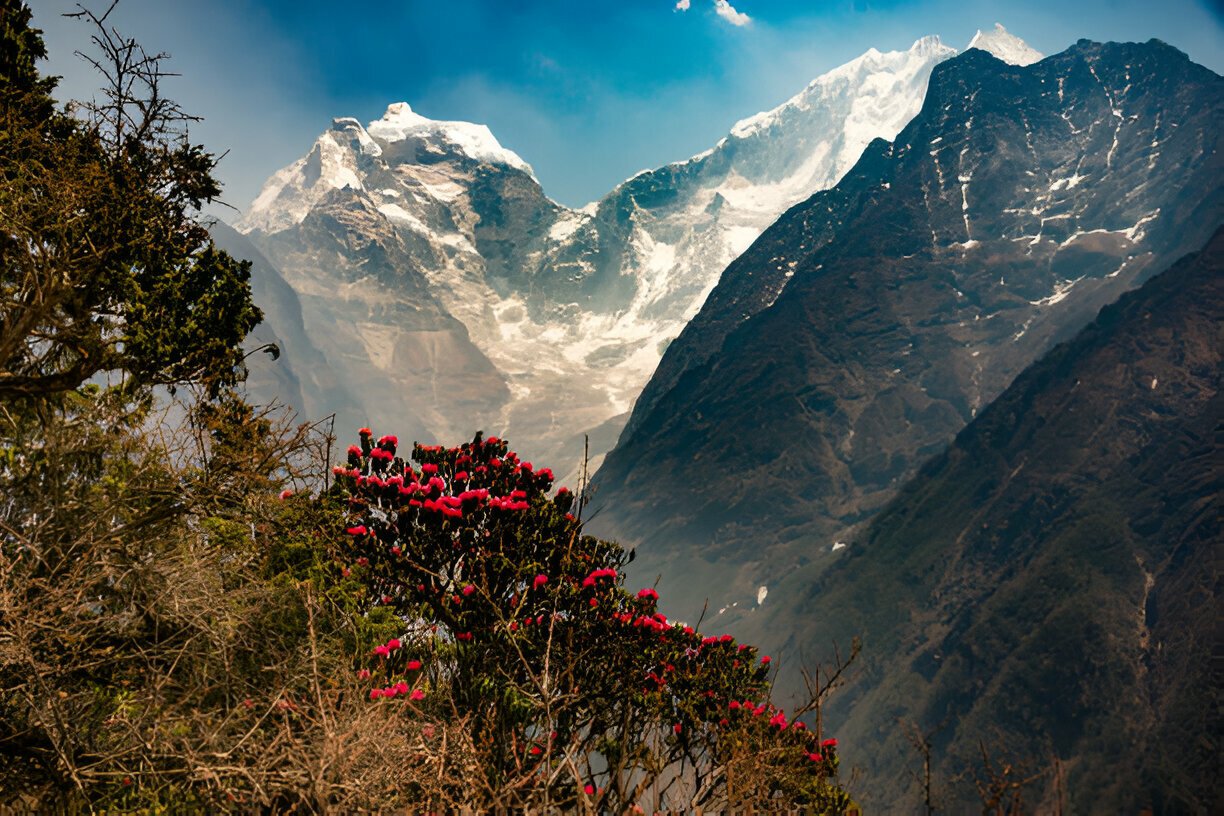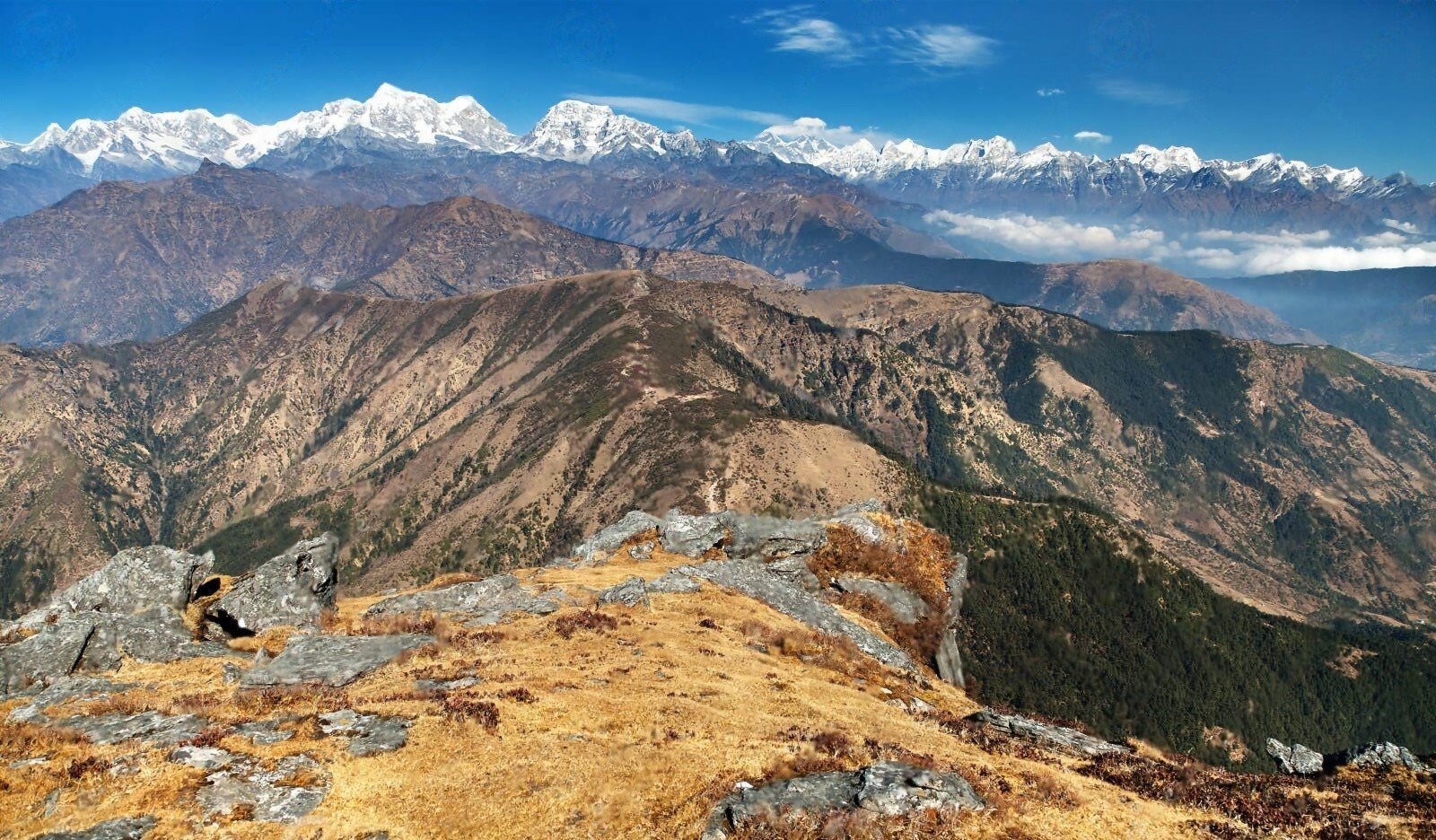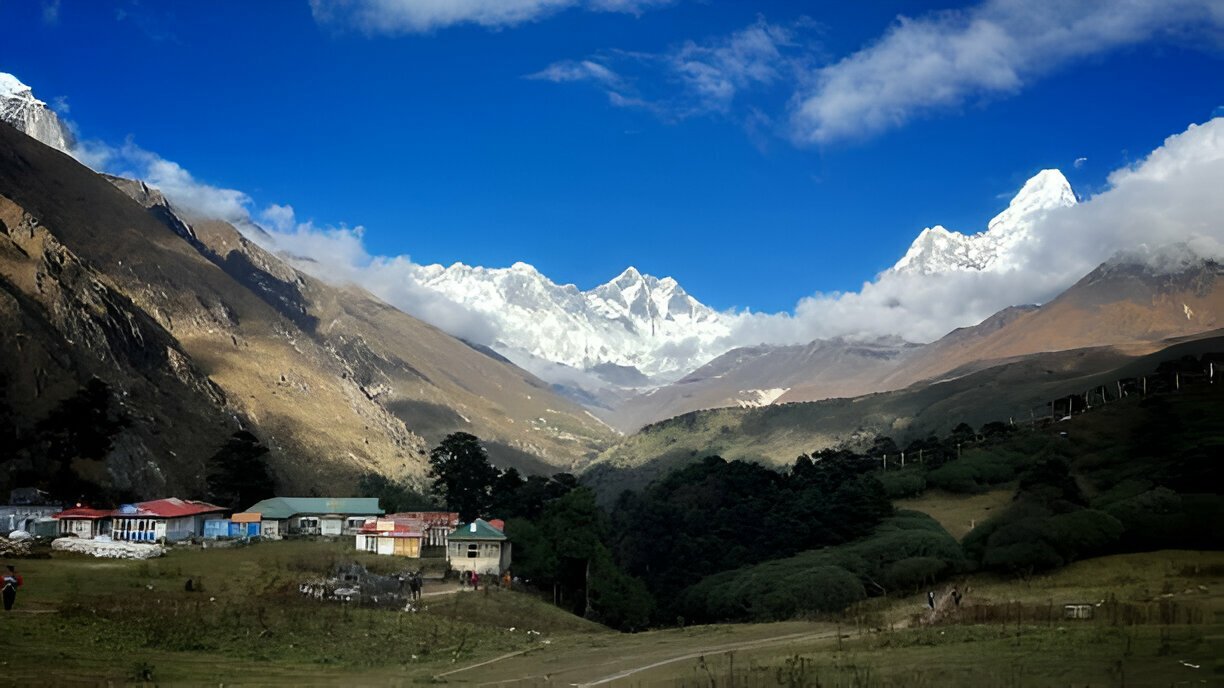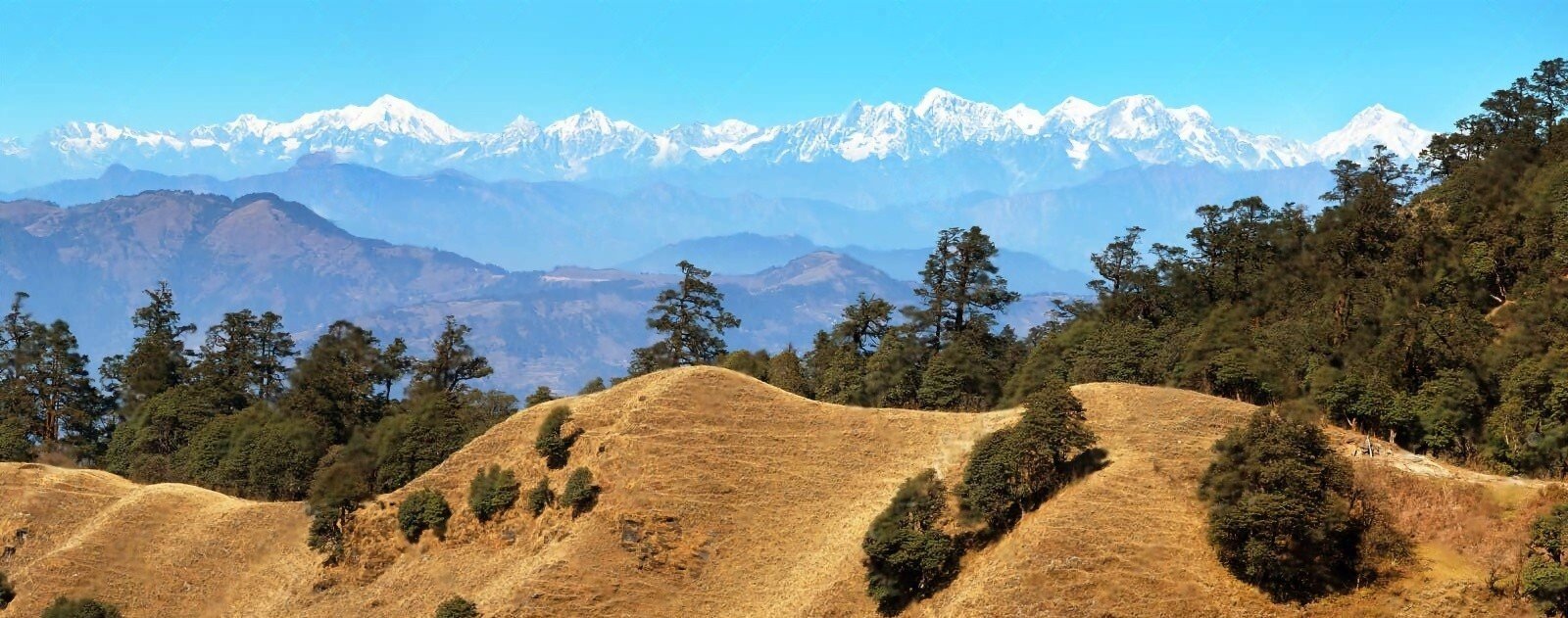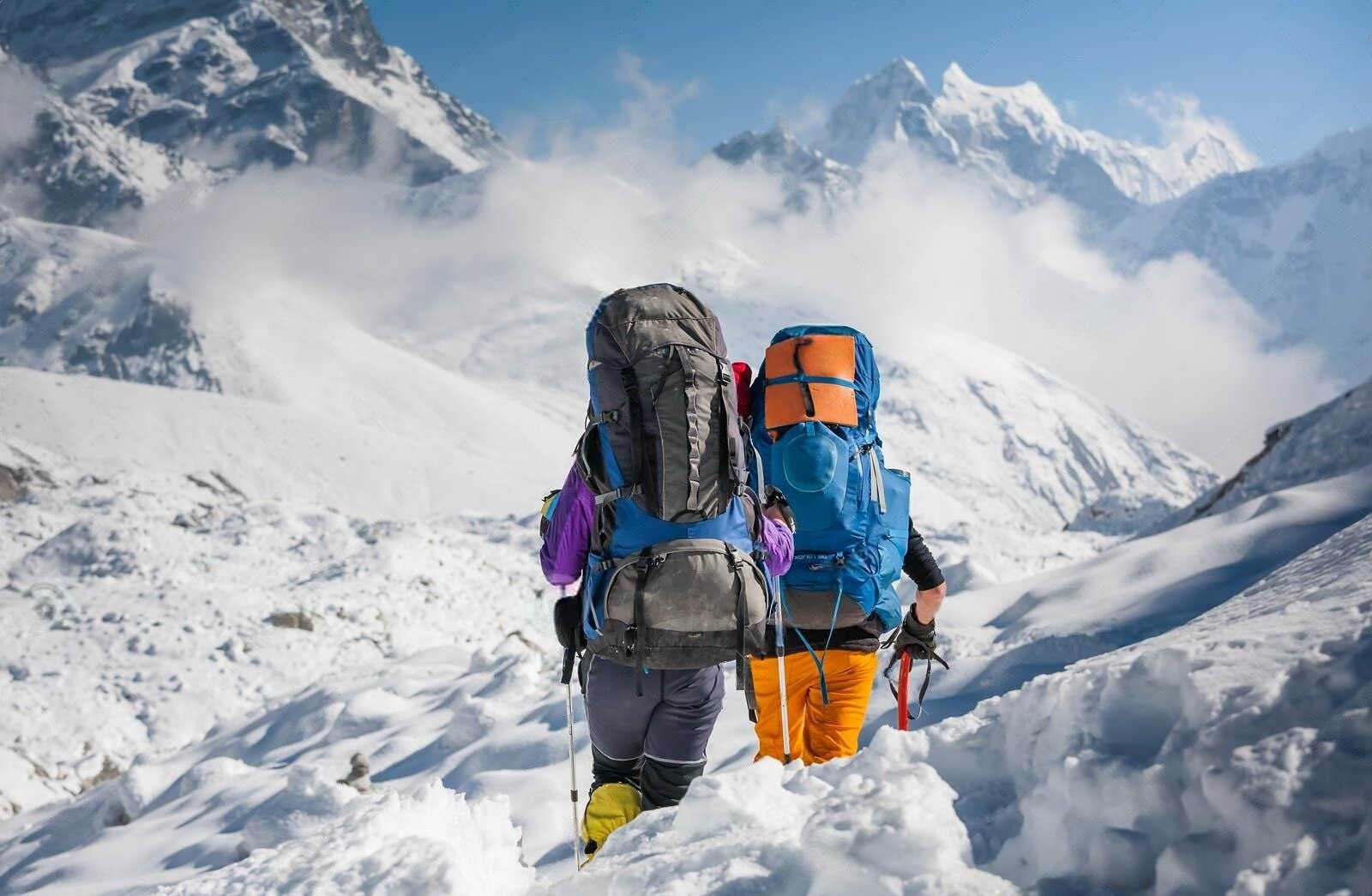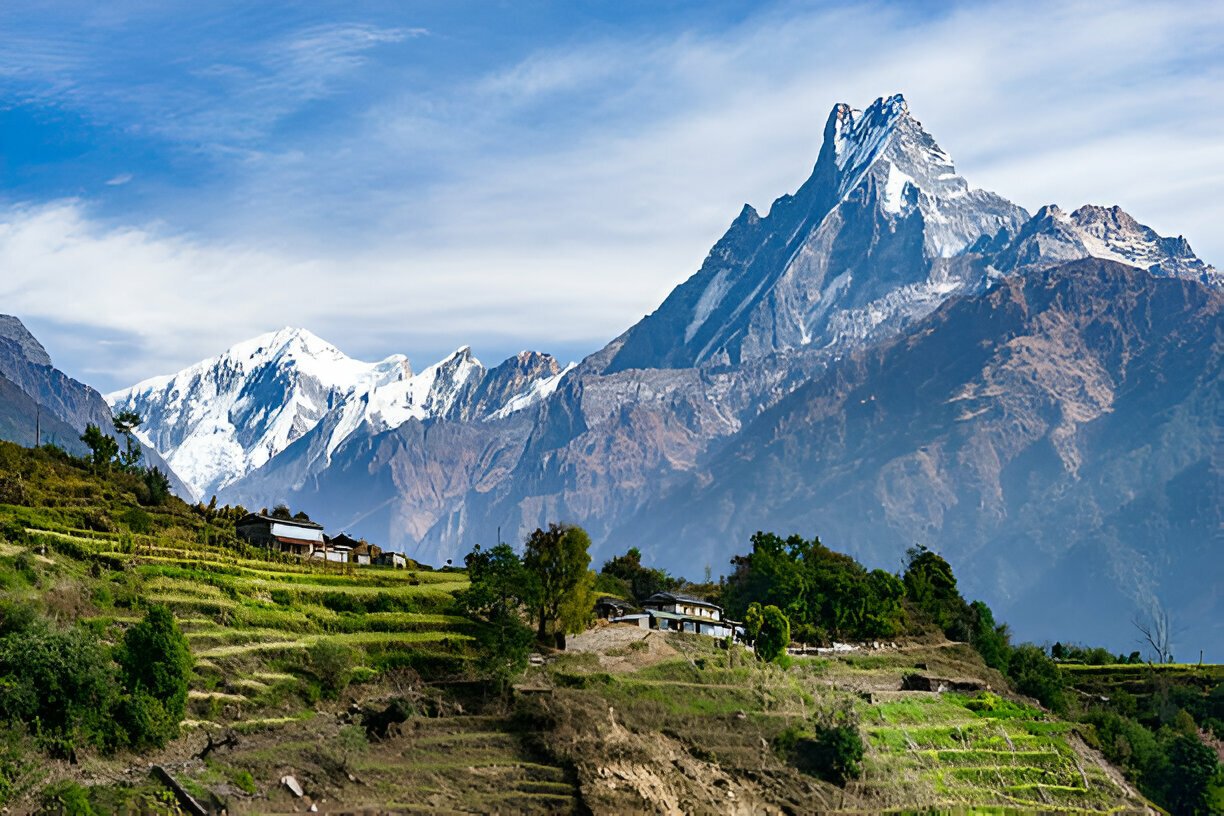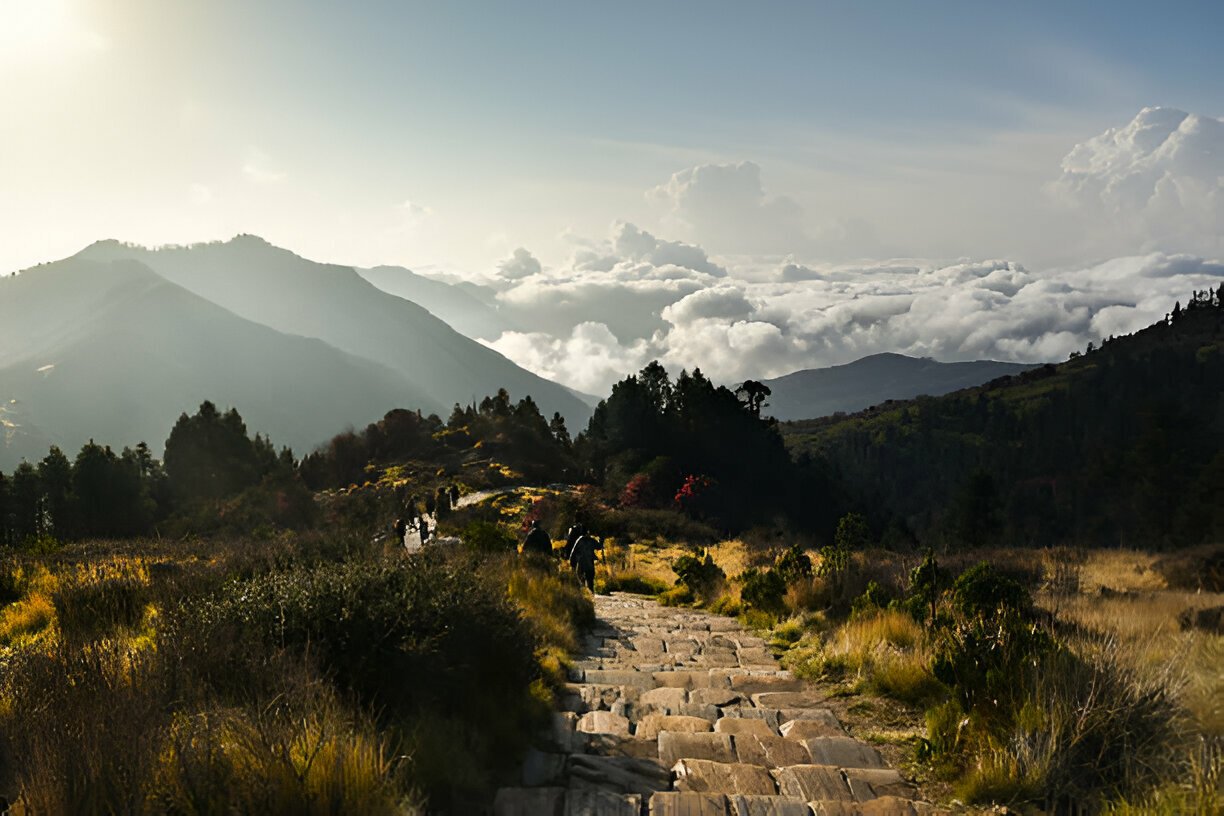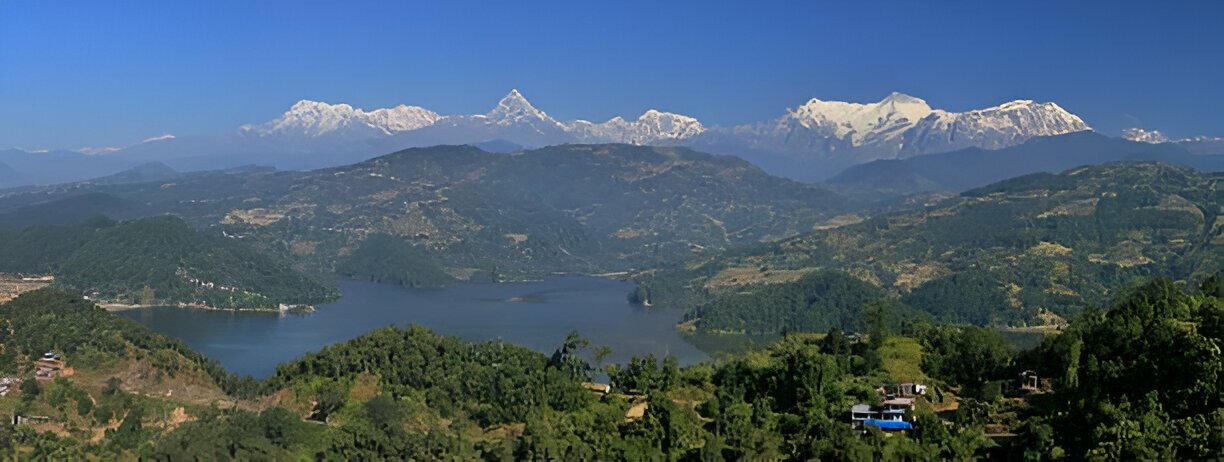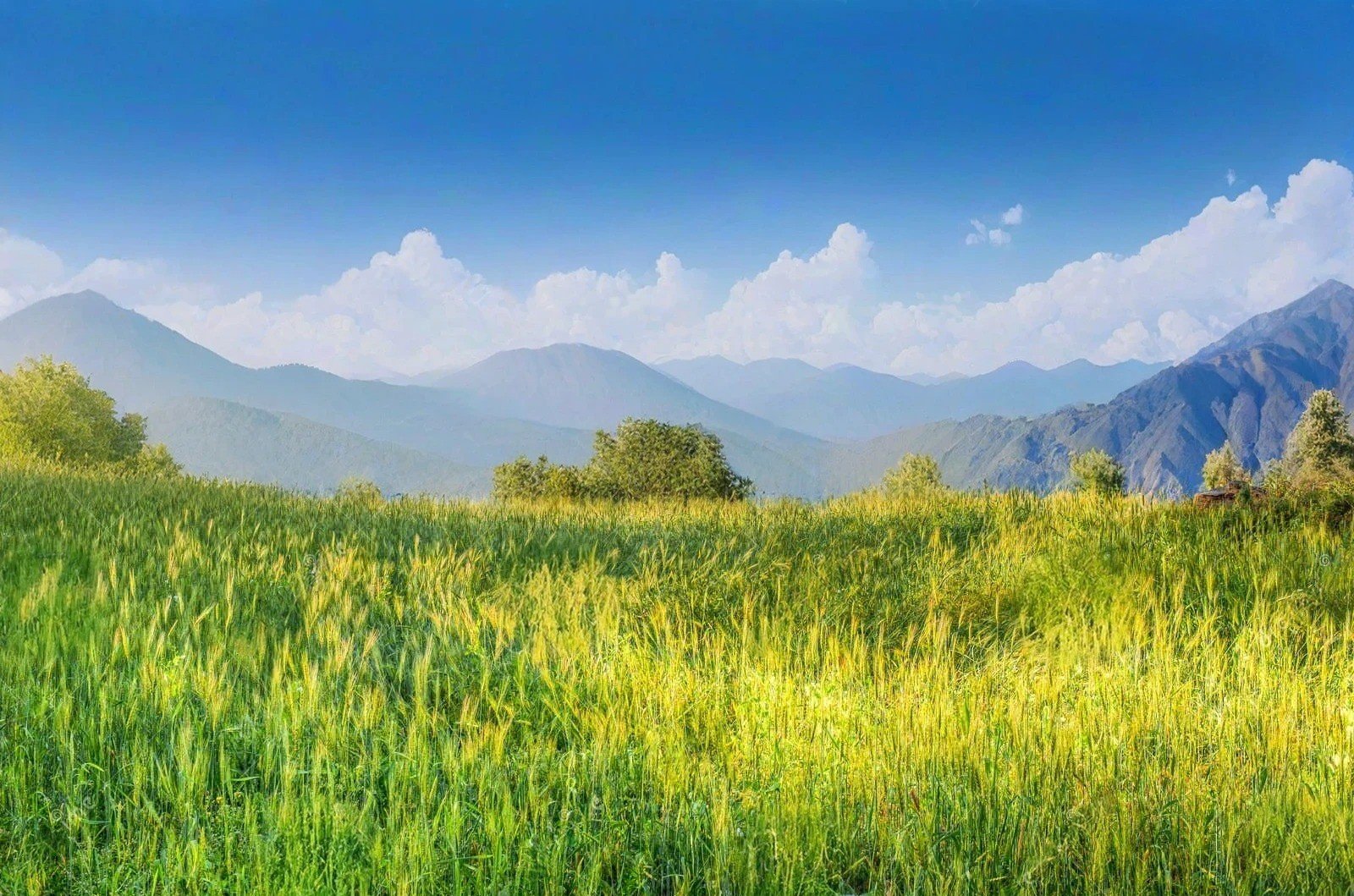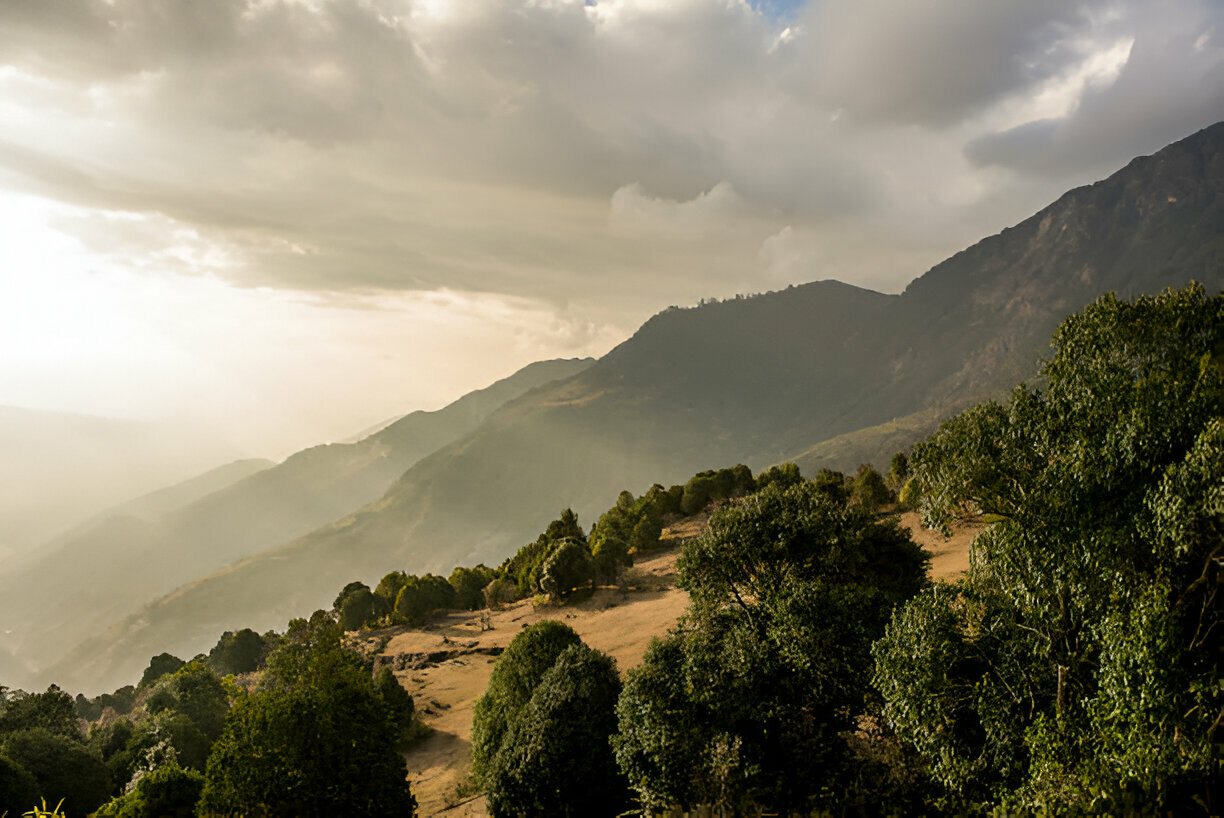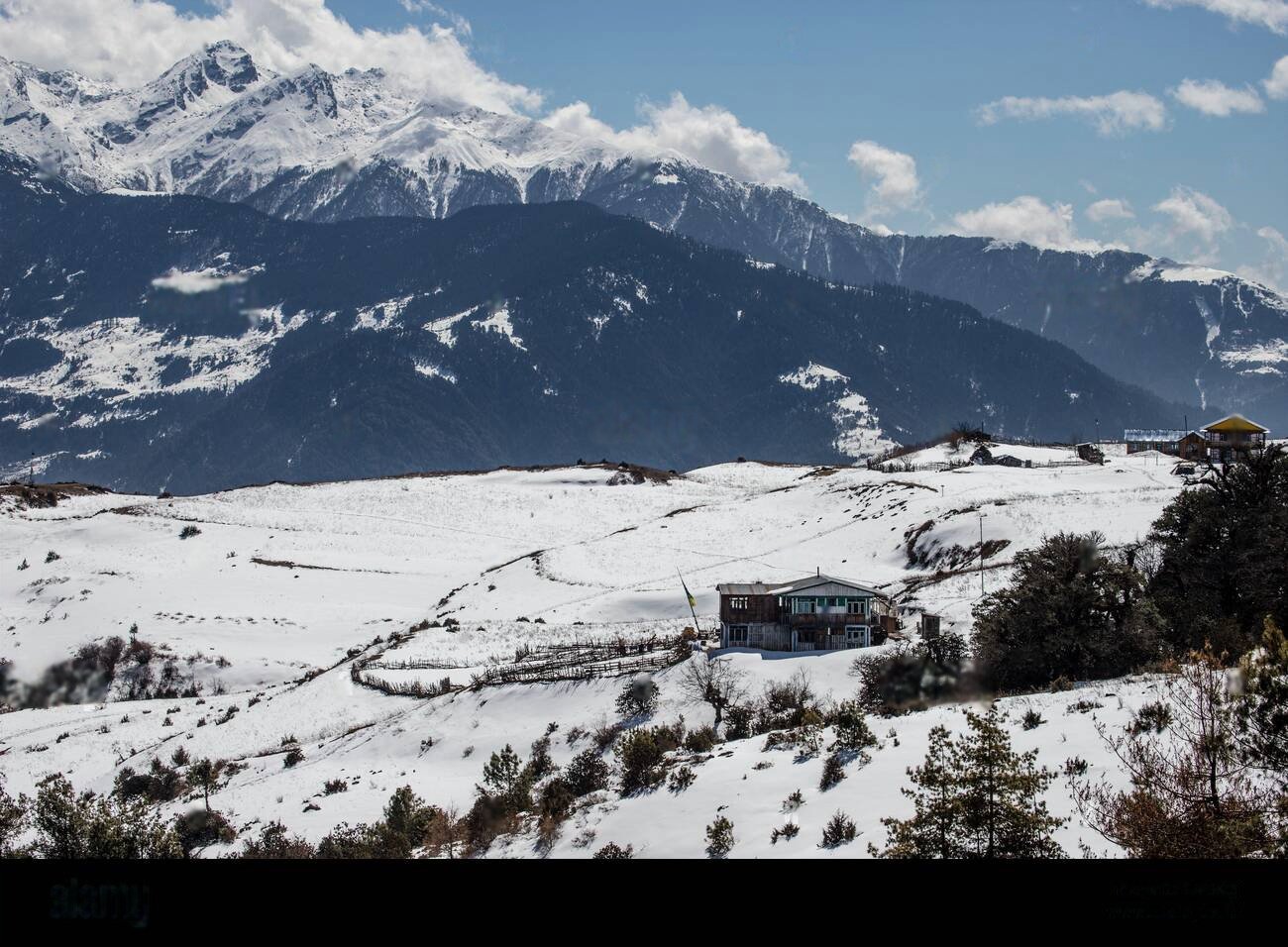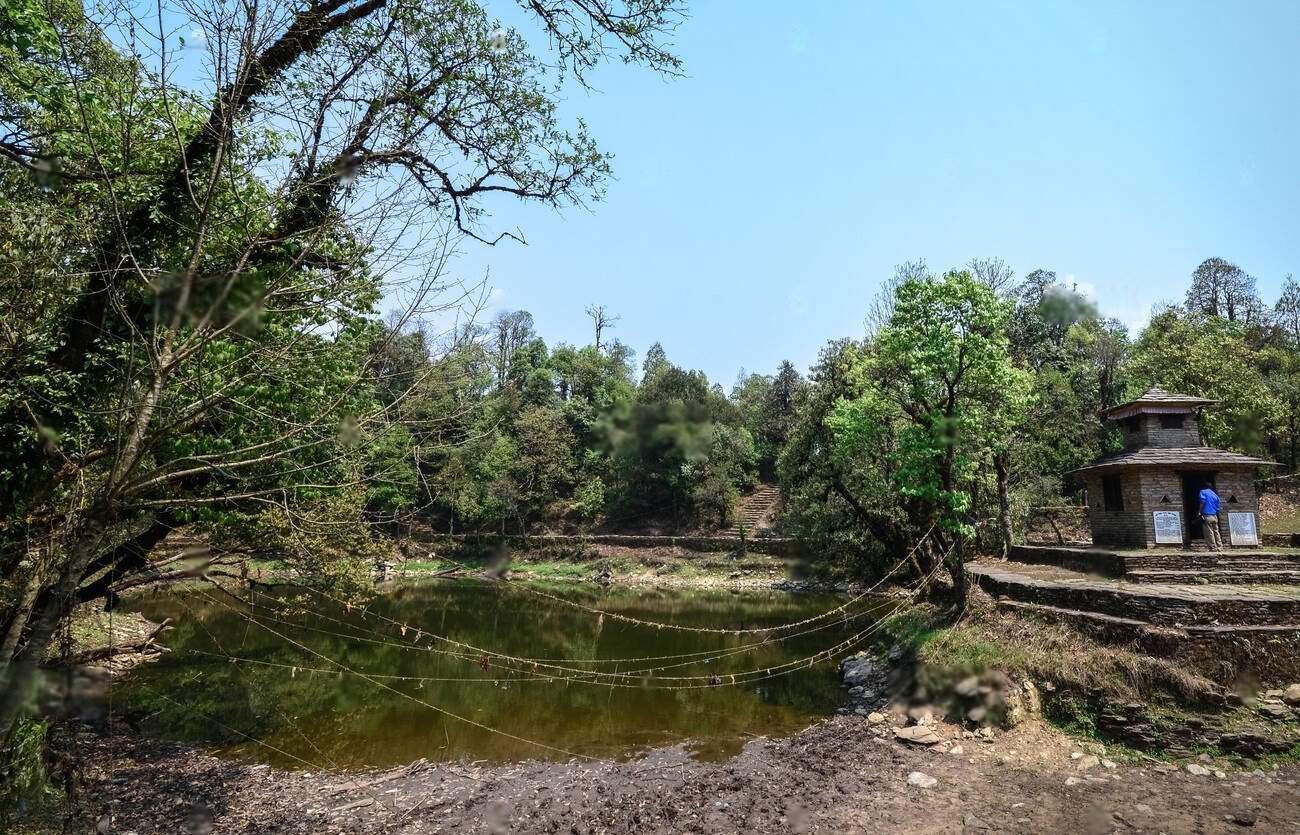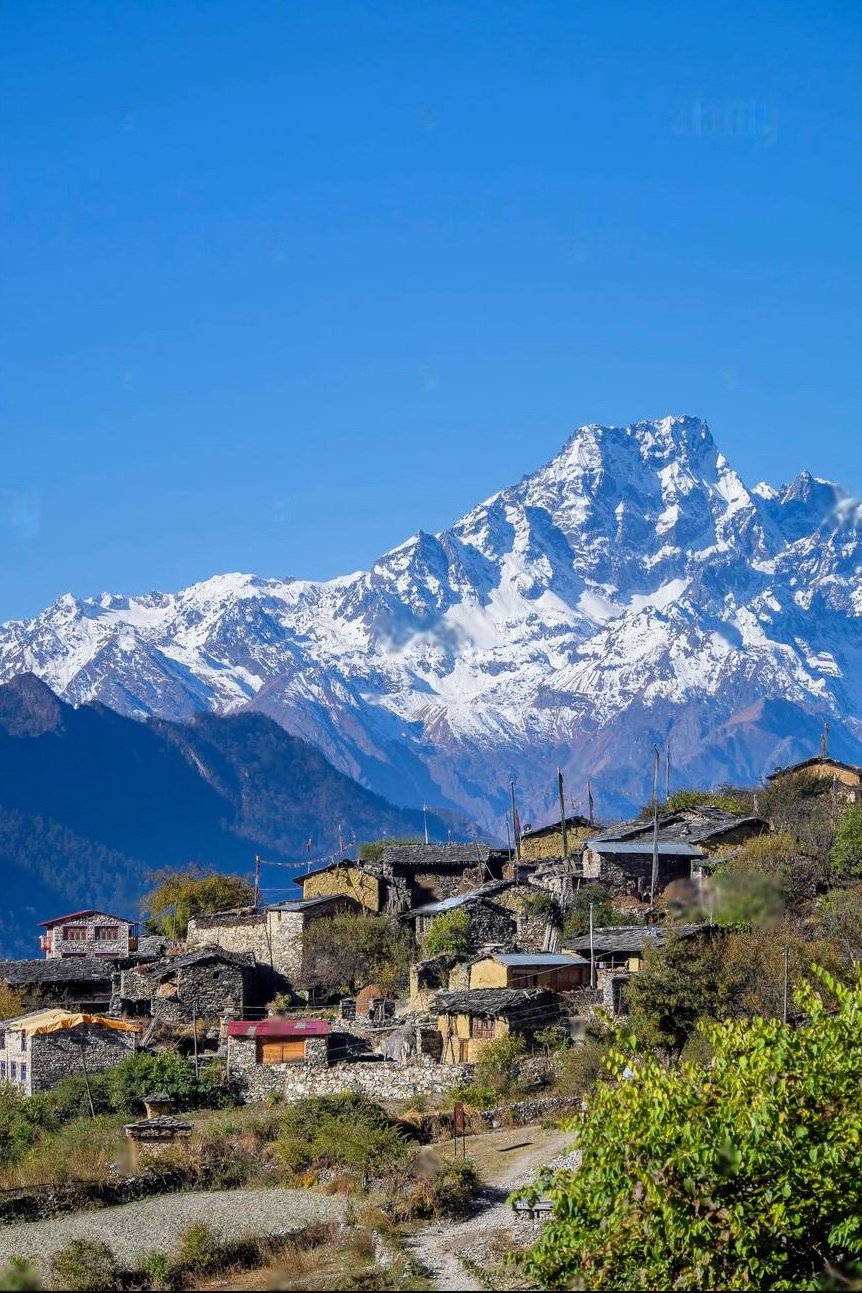 About this Trip
About this Trip
The Ruby Valley Trek represents a perfect balance between natural splendor and cultural authenticity. What makes this journey special is its genuine off-the-beaten-path character, offering travelers a glimpse into traditional Nepali life that has remained largely unchanged for generations.
As you traverse from the lowland villages near Dhading to the high mountain passes of the Ganesh Himal region, the landscape transforms dramatically. The trail begins in subtropical zones with banana plants and rice paddies, gradually ascending through oak and rhododendron forests before opening to alpine meadows with sweeping mountain vistas. Each day brings new terrain and perspectives, with the snow-capped peaks of the Ganesh Himal range revealing themselves in increasingly impressive displays.
The cultural aspect of the trek is particularly compelling. The villages along the route—primarily inhabited by Tamang and Gurung ethnic groups—offer genuine interactions far from the commercial atmosphere found on more popular trekking routes. Traditional homes built of stone and wood, with distinctive architectural features, dot the landscape. Religious practices blend Buddhism and Hinduism with ancient shamanic traditions, creating a unique spiritual atmosphere evident in the prayer flags, chortens, and local ceremonies you might encounter.
Physically, the trek presents moderate challenges with some steep sections and the high crossing of Pangsang Pass (4,300m), but without the extreme altitudes found on other Himalayan treks. The route is designed to allow gradual acclimatization, making it accessible to reasonably fit trekkers while still providing a sense of accomplishment.
Throughout the journey, the connections formed with local communities add extraordinary depth to the experience. You might be invited to participate in daily activities such as traditional farming, food preparation, or cultural performances. These authentic interactions often become the most cherished memories of the journey, creating bonds that transcend language barriers and cultural differences.
The Ruby Valley Trek represents a perfect balance between natural splendor and cultural authenticity. What makes this journey special is its genuine off-the-beaten-path character, offering travelers a glimpse into traditional Nepali life that has remained largely unchanged for generations.
As you traverse from the lowland villages near Dhading to the high mountain passes of the Ganesh Himal region, the landscape transforms dramatically. The trail begins in subtropical zones with banana plants and rice paddies, gradually ascending through oak and rhododendron forests before opening to alpine meadows with sweeping mountain vistas. Each day brings new terrain and perspectives, with the snow-capped peaks of the Ganesh Himal range revealing themselves in increasingly impressive displays.
The cultural aspect of the trek is particularly compelling. The villages along the route—primarily inhabited by Tamang and Gurung ethnic groups—offer genuine interactions far from the commercial atmosphere found on more popular trekking routes. Traditional homes built of stone and wood, with distinctive architectural features, dot the landscape. Religious practices blend Buddhism and Hinduism with ancient shamanic traditions, creating a unique spiritual atmosphere evident in the prayer flags, chortens, and local ceremonies you might encounter.
Physically, the trek presents moderate challenges with some steep sections and the high crossing of Pangsang Pass (4,300m), but without the extreme altitudes found on other Himalayan treks. The route is designed to allow gradual acclimatization, making it accessible to reasonably fit trekkers while still providing a sense of accomplishment.
Throughout the journey, the connections formed with local communities add extraordinary depth to the experience. You might be invited to participate in daily activities such as traditional farming, food preparation, or cultural performances. These authentic interactions often become the most cherished memories of the journey, creating bonds that transcend language barriers and cultural differences.
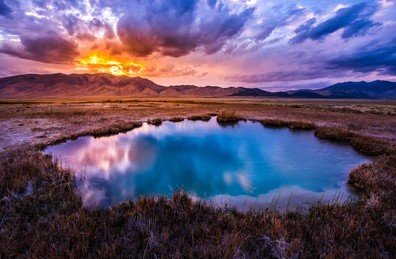
From $0
Price Varies from Group Size
Success
Here goes about why the success toast occurred.
 Itinerary
Itinerary
Ruby Valley trek offers a unique blend of cultural immersion and natural beauty, traversing through traditional Tamang and Gurung villages, lush forests, and alpine meadows, all set against the backdrop of the majestic Ganesh Himal range. It's an ideal choice for trekkers seeking solitude and an authentic Himalayan experience.
Arrival in Kathmandu (1,400m)
Your Ruby Valley adventure begins in Nepal's vibrant capital. After airport pickup, settle into your hotel and attend a pre-trek briefing with your guide. Take time to explore Kathmandu's historic sites, gather last-minute trekking supplies from Thamel, and sample authentic Nepali cuisine while preparing for the adventure ahead.
Experience Highlights:
- Historic temples and stupas of Kathmandu
- Vibrant shopping in Thamel district
- Authentic Nepali cuisine sampling
- Pre-trek briefing with experienced guide
- Cultural immersion in Nepal's capital
Kathmandu to Syabrubesi (1,550m)
Begin your journey with a scenic 7-8 hour drive from Kathmandu to Syabrubesi. The route follows the Trishuli River valley before climbing into the hills along winding mountain roads. Enjoy spectacular views of terraced fields, traditional villages, and occasional glimpses of the Himalayan peaks.
Experience Highlights:
- Scenic 7-8 hour drive through central Nepal
- Views along the Trishuli River valley
- Traditional villages and terraced landscapes
- Gateway to both Langtang and Ruby Valley
- First taste of mountain village life
Syabrubesi to Gatlang (2,238m)
Your first trekking day involves a 5-6 hour climb from Syabrubesi to the traditional Tamang village of Gatlang. The trail ascends steadily through pine and rhododendron forests, offering progressively expansive views. Gatlang features traditional stone houses, a historic Buddhist monastery, and the sacred Parvati Kund lake.
Experience Highlights:
- First day of actual trekking
- Traditional Tamang village with stone houses
- Historic Buddhist monastery visit
- Sacred Parvati Kund lake
- Pine and rhododendron forest trails
Gatlang to Somdang (3,271m) via Yuri Kharka
Today's challenging trek takes you from Gatlang to Somdang, climbing through changing vegetation zones and across Khurphu Bhanjyang pass. Rest at Yuri Kharka, a summer grazing area, before reaching Somdang, a former mining settlement in a wide valley surrounded by impressive peaks.
Experience Highlights:
- Challenging trek over Khurphu Bhanjyang pass
- Yuri Kharka summer grazing area
- Former zinc mining settlement of Somdang
- Changing vegetation zones with altitude
- Significant elevation gain (1,033m)
Somdang to Pangsang Pass (4,300m) to Pangsang Kharka
This pivotal day features a challenging but rewarding trek over the highest point of your journey, Pangsang Pass (4,300m). Starting early, climb steadily through alpine terrain with diminishing vegetation. From the prayer flag-adorned summit, enjoy breathtaking 360-degree views of Ganesh Himal, Langtang peaks, Manaslu, and Annapurna ranges.
Experience Highlights:
- Highest point of the trek at 4,300m
- Breathtaking 360-degree mountain panoramas
- Prayer flags and spiritual significance at the pass
- Views of Ganesh Himal, Langtang, Manaslu, Annapurna
- Alpine terrain with diminishing vegetation
Pangsang Kharka to Borang (2,100m)
Today's trek involves a substantial descent from alpine elevations to the mid-hill village of Borang. The trail winds down through rhododendron forests that bloom spectacularly in spring. Borang offers your first encounter with Gurung culture, featuring traditional round houses and renowned hospitality.
Experience Highlights:
- Substantial descent through multiple climate zones
- Spectacular rhododendron forests (spring blooms)
- First encounter with Gurung culture
- Traditional round houses architecture
- Terraced agricultural fields
Borang to Shertung (1,875m)
This easier day takes you from Borang to Shertung through beautiful middle-hill landscapes. The trail follows gentle contours through terraced fields and scattered hamlets. Shertung village preserves traditional Tamang culture, including distinctive dress, music, and religious practices blending Buddhism with shamanic traditions.
Experience Highlights:
- Gentle middle-hill landscapes
- Traditional Tamang cultural preservation
- Distinctive dress, music, and religious practices
- Buddhist-shamanic tradition blend
- Possible traditional dance performances
Shertung to Chalish (1,200m)
Continue your journey with a trek descending further into the lower valleys. The trail passes through several small settlements, terraced crops of millet, corn, and rice, and patches of subtropical forest. Chalish village sits near river confluence with a mixed ethnic community known for traditional crafts.
Experience Highlights:
- Descent into lower subtropical valleys
- Terraced crops of millet, corn, and rice
- Mixed ethnic community village
- Traditional bamboo weaving and pottery
- Warmer subtropical climate
Chalish to Darkha (850m)
Today's trek takes you through the lower foothills to Darkha village. The trail follows the river valley, crossing several suspension bridges and passing through small farming communities. The subtropical environment features banana plants, orange trees, and other fruit crops thriving in the warmer climate.
Experience Highlights:
- Lower foothill river valley trail
- Multiple suspension bridge crossings
- Subtropical fruit cultivation (bananas, oranges)
- Small farming communities
- Transitional facilities before urban return
Darkha to Dhading Besi via Salanghat
Complete your trekking journey with a morning hike from Darkha to Salanghat, where the trail meets the road. Board local transportation for the drive to Dhading Besi, the district headquarters. This busy market town offers a stark contrast to the peaceful villages, celebrating trek completion with a farewell dinner.
Experience Highlights:
- Final trekking portion to road head
- Local transportation experience
- Busy market town contrast
- District headquarters facilities
- Farewell dinner with trekking team
Dhading Besi to Kathmandu
Board your return vehicle for the 3-4 hour drive back to Kathmandu. The journey follows busy highways, providing time to reflect on the contrast between rural Nepal and rapidly developing urban areas. Upon arrival, check into your hotel and enjoy city amenities after your immersive rural experience.
Experience Highlights:
- Return journey through busy highways
- Contrast between rural and urban Nepal
- Reflection time on cultural experiences
- Return to city amenities and comforts
- Urban development observations
Departure from Kathmandu
Your Ruby Valley adventure concludes with a transfer to Kathmandu International Airport for your departure flight. Depending on your schedule, you might have time for last-minute shopping or sightseeing in Kathmandu before leaving Nepal with unique memories of a region few international travelers have experienced.
Experience Highlights:
- Final opportunity for Kathmandu exploration
- Last-minute souvenir shopping
- Unique off-the-beaten-path trek memories
- Airport transfer and departure assistance
- Cultural insights from lesser-known region
 Services
Services
Includes
- Local permits and TIMS card (Trekkers' Information Management System)
- Specialized bilingual guide knowledgeable in local traditions
- Private transport between Kathmandu and trailheads
- Daily meals on the trek: breakfast, lunch, and dinner
- Services of an experienced guide and porter during the trek
- Accommodation throughout the trek (community lodges, homestays, and tea houses)
- All government taxes and official expenses
Excludes
- Additional accommodation due to unexpected delays or changes
- Comprehensive travel and medical insurance for the trip
- Gratuities for the guides, porters, and trekking support staff
- International flights and Nepal entry visa fees
- Personal trekking equipment and gear (sleeping bags, jackets, etc.)
- Personal expenses including snacks, drinks, hot showers, and battery charging
- Alcohol and carbonated drinks
 Good To Know
Good To Know
Regular cardio training for 1-2 months is adequate preparation for this moderate trek. Pack for variable temperatures, as days can be warm while nights get cold at higher elevations. Bring a water purification system, as bottled water isn't available in remote villages. Ask permission before photographing local people or religious sites. Carrying small gifts like school supplies or useful household items for homestay hosts is appreciated, but avoid giving candy to children. Small Nepalese rupee denominations are essential as there are no ATMs along the route, and change for large bills is rarely available.
Wildlife Encounters
Himalayan langur monkeys
Barking deer
Red pandas (rare, in dense forests)
Jackals
Numerous bird species including colorful minivets
Himalayan black bears (very rare)
Diverse butterfly species
Mountain goats
Alpine wildflowers
Medicinal herbs
 Reviews
Reviews
 FAQs (Frequently Asked Questions)
FAQs (Frequently Asked Questions)
Your queries are answered.
Do I need trekking experience?
Prior trekking experience is helpful but not mandatory. Regular exercise for 1-2 months before the trek, focusing on cardiovascular fitness and hill walking, should provide adequate preparation.
What is the best time of year for this trek?
March to May (spring) offers spectacular rhododendron blooms and warmer temperatures, while October to November (autumn) provides the clearest mountain views and generally stable weather. December-February is possible but cold at higher elevations, and the monsoon season (June-September) brings leeches and obscured views.
Are permits required for this trek?
The Ruby Valley trek requires less bureaucracy than restricted areas. You'll need a TIMS card (Trekkers' Information Management System) and local area permits, which your trekking agency can arrange.
How do I prevent altitude sickness?
The trek reaches a maximum altitude of 4,300m at Pangsang Pass, so proper acclimatization is important. The itinerary is designed with appropriate gradual ascent. Stay hydrated, avoid alcohol, ascend slowly, and communicate any symptoms to your guide immediately.
What type of accommodation can I expect?
Accommodation is a mix of community lodges, basic teahouses, and homestays. Expect simple twin rooms or occasionally shared dormitory-style rooms, basic toilets (usually outside), and common dining areas. Homestays offer the most authentic cultural experience but have the most basic facilities.
Is it possible to shower during the trek?
Basic cold water washing facilities are available throughout, with occasional solar-heated showers in some villages for an additional fee. Many trekkers rely on wet wipes for personal hygiene during much of the trek.
How reliable is the WiFi and phone connectivity?
Very limited. There is virtually no WiFi in the Ruby Valley, and mobile network coverage is sporadic at best. Consider this trek a digital detox and inform family and friends that you'll be out of contact for much of the journey.
Can dietary restrictions be accommodated?
Vegetarian diets are easily accommodated, but strict vegan, gluten-free, or other specific diets may be challenging. The standard meal in mountain communities is dal bhat (rice, lentil soup, and seasonal vegetables), which is naturally vegetarian. Bringing supplementary food items is recommended for specialized diets.
How much should I budget for the trek?
Beyond the package cost, budget approximately $8-12 per day for additional snacks, drinks, and any small souvenir purchases from local villages. Costs are generally lower than on more popular trekking routes.
How much should I tip the guides and porters?
Tipping is customary and appreciated. A general guideline is $8-12 per day for guides and $5-7 per day for porters, typically given at the end of the trek.
